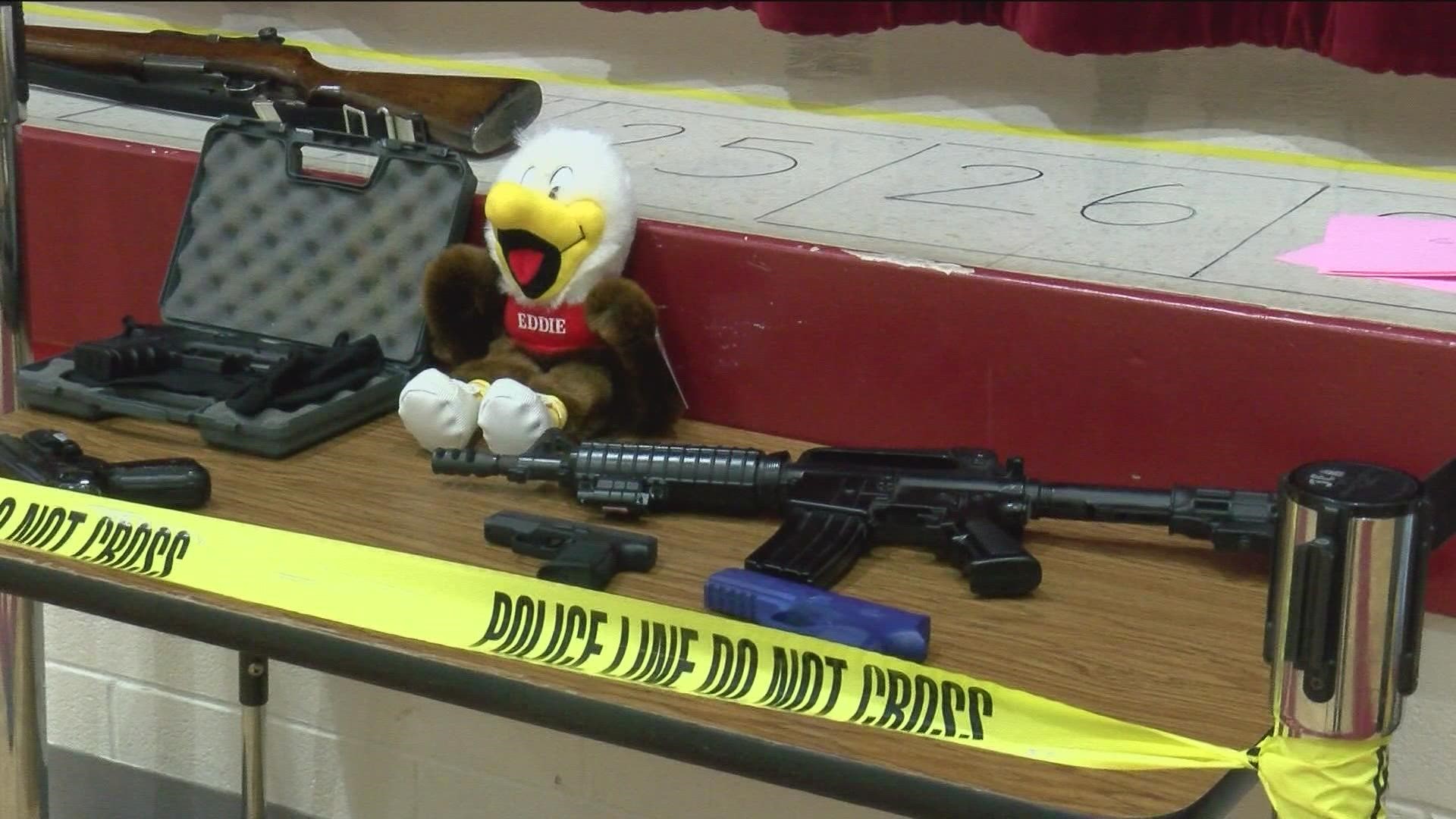TOLEDO, Ohio — Ohio Gov. Mike DeWine on Wednesday unveiled training requirements for school staff members to be armed on school grounds, on the same day as the 10-year anniversary of the mass shooting that killed 26 people at Sandy Hook Elementary in Newtown, Connecticut.
In House Bill 99, the Ohio School Safety Center's Armed School Staff Essential Training -- ASSET -- requirements detail how staff could, if approved by their respective school district, be armed on school grounds.
Staff must have 24 hours of initial training and eight hours of annual recertification training. These initial and recertification trainings would include:
- scenario-based training
- instruction on mitigation techniques
- de-escalation techniques
- tactics of responding to critical incidents
- neutralization of potential threats and active shooters
- tactical live firearm training
Wood County Sheriff Mark Wasylyshyn said the bill is necessary for school boards to have options in choosing what's best to protect their districts, staff and students.
"Ideally, multiple law enforcement officers in every school building," Wasylyshyn said. "But, who is going to pay for that? That would be a huge expense for schools to do that. So, that's why school boards are elected and get to decide what's best for their district."
Representatives from the Ohio Federation of Teachers and the Toledo Federation of Teachers said their focus during the legislative session was less on House Bill 99 and more on education legislation.
TFT President Kevin Dalton said legislation should give districts resources to hire people trained with firearms, rather than outline how to arm teachers.
Wasylyshyn said choosing whether or not to have armed staff is a matter of district budget cost, priority and safety.
"That school board needs to decide what's best for their school," Wasylyshyn said. "Even when you talk to these schools, it's not like every teacher that wants to, can carry. They're going to have their own internal processes and internal applications of 'Why should I let this teacher carry?' 'What are they bringing to the table?'"
While those hours of training are well below an average school resource officer's law enforcement 700 hours of police academy training, some training is better than none, Wasylyshyn said.
"They could say that we could just make it the same rule as (carrying a concealed weapon)," he said. "You don't have to have any training. You don't have to have any knowledge of guns and no knowledge of the liabilities. At least there's something here that is giving them some training and some understanding and requiring them to actually shoot the gun."
Wasylyshyn said school superintendents within Wood County said if they decided to let staff arm themselves, they must take additional training, possibly with law enforcement. He said there's potential for some firearms qualifications on an annual basis, along with other training.
Along with the announcement of the finalized requirements of ASSET, there was a reminder of the Student Wellness and Success Fund the DeWine created. DeWine said the fund launched 1,300 mental health programs and trained 6,500 educators and school professionals to help students in need.
Wasylyshyn said the focus on mental health is needed now more than ever.
"Our society has dropped the ball when it comes to mental health, and mental health recognition in people with mental health problems, recognizing and doing something about it," he said. "Every one of these bad situations, there are experts that night, or the next day, 'Oh yeah Johnny had all these warning signs.' We didn't help them."
Dalton gave WTOL 11 a statement on House Bill 99 that reads, in full:
"While I have not had an opportunity to closely review the recently announced completed gun safety curriculum that would allow teachers to be armed, I believe the role of securing a school and safe guarding a school campus should be left to the trained safety forces. TFT would rather see legislators pass legislation that not only provides resources so districts can hire more trained safety force workers if needed, but also create language that allows/encourages school districts to find a balance between social emotional learning/wellbeing and accountability. Our members are looking for the ability to maintain a learning environment with instructional integrity without fear of legislative penalties for doing so," Dalton said.

